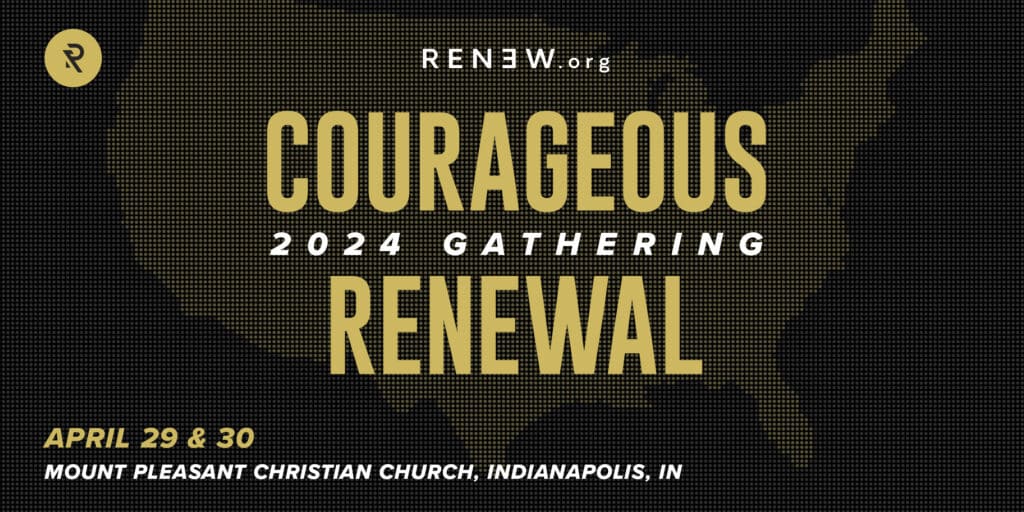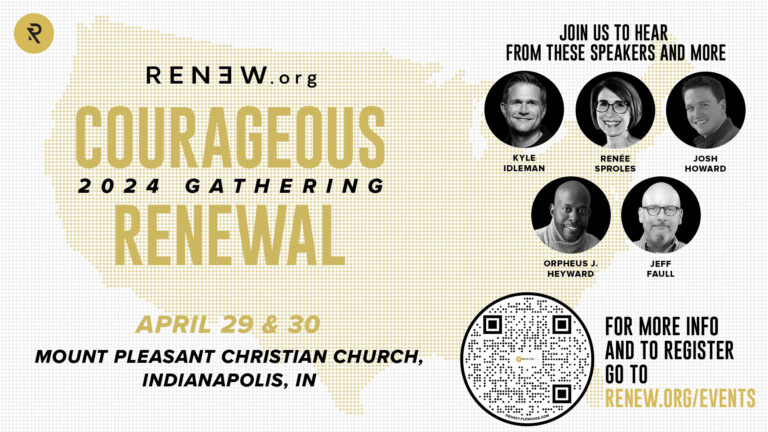The first question I ask when teaching my Doctor of Ministry course is, “What do you want your congregation to look like in a year?” Followed by, “For what do you want your congregation to be known within the local community?” The consistent reply to those questions is blank stares. My dumbfounded reply to the silence is, “Then what are you preaching?”
Nearly every congregation has some sort of mission/vision statement or a slogan they use to describe their purpose. They provide in a few words the ostensible answer to my questions. When I press the students to move beyond the silence, these statements usually follow. “Making more and better disciples.” “Knowing Jesus and making Jesus known.” “New is for everyone.”
What Does Our Mission Statement Mean?
Every church needs some sort of memorable phrase to describe themselves, but that is never enough to guide the preaching process. To generate relevant/effective preaching, the preacher and leadership must agree on what measurements are being used to evaluate whether the church is being (becoming) what they claim.
Take one rather common statement as an example: “Knowing Christ and making Christ known.” Practically speaking, what does “Knowing Christ” mean, and how do we know if our parishioners do “know Christ”?
Arbitrarily, let’s say the leadership says, “Knowing Christ means being more reliant on Christ during stressful times. In other words, people will worry less and pray more. They will be less discouraged when life takes unexpected turns.” And, in addition, the leaders decide that “knowing Christ means being more like Christ, specifically in the area of service. Our ministries will be better resourced with volunteers. New people will be serving in existing ministries and new ministries will be developing.”
“Practically speaking, what does ‘Knowing Christ’ mean, and how do we know if our parishioners do ‘know Christ’?”
So, a partial answer to my question, “What do you want your congregation to look like in a year?” might be, “Our people will exhibit more confidence in their relationship with Jesus when stressful times occur.” Which then logically leads to more questions (more than these samples):
- What does more confidence look like?
- How do we know if people are worrying less and praying more?
- How does “community” affect our ability to handle stressful situations?
At this point, the preacher in you is beginning to formulate a plan of attack (a process to be developed in a future article). You’re musing over the book of Philippians. You read the book several times and realize Paul provides some rich texts that address these concerns. You begin to think six to nine months down the road when a series of this nature would naturally fit in the rhythms of your congregation.
Who We Are Becoming
It’s at this stage that I want to encourage you to formulate some specific measurements. In other words, what are realistic measurable outcomes for these themes? Some of those outcomes may be very specific: “a 50% increase in the number of requests for prayer being made to the elders, staff, small group leaders, etc.” Others will, of necessity, be anecdotal: “We’ve heard Jim and Sally make deeply confident statements of faith in spite of discovering that Jim has cancer. They have profoundly influenced their small group with their peace in this situation.”
Ultimately what we are talking about is changing a culture, which is no small task. In some cases, it may be more directing a culture, tweaking it, enhancing it, or catapulting it into greater prominence. All those require wise intentionality and lots of patience.
“Ultimately what we are talking about is changing a culture, which is no small task.”
This is a great deal more than “vision-casting” in the traditional sense of the word. It’s not merely an annual series of sermons reminding people what our vision and goals are. Instead, it requires painting specific pictures of what those goals actually look like in real life and how we might achieve them. It’s identity creation: “This is who we are becoming.”
Culture-Shaping Shifts
Behind the scenes, in elders’ and leadership team meetings, among staff and other key leaders, we also need to be talking this culture. We are formulating the impact this culture might have on our existing programs (you seldom change a culture without being forced to change programming to some degree). A “more praying church” may require space and time in worship for praying. A “more confident church” may produce powerful testimonies to be used as part of worship, in sermons, or on websites. Small groups may well need to adjust their time constraints to provide space for conversations and prayers over transparent, personal situations.
Having a specific picture of your congregation’s future ignites your imagination. You find yourself dreaming of texts to be preached, personal stories to be shared, and deep, personal conversations taking place. When that happens, deciding what to preach on Sunday moves from “What on earth will I preach this week?” to “Which of these ideas/texts do I have to discard; I only have so many weeks to give to this.”
“Having a specific picture of your congregation’s future ignites your imagination.”
A serious caveat must be included: it rarely goes as planned. Make that two caveats: it also rarely happens as fast as you’d like. But it’s okay, you’re not preaching for a week, not even for a year, but for a lifetime. These culture-shaping shifts are worth the effort. You give your all to two or three key changes/developments this year and take what progress you get. You evaluate and decide if you should build on those themes next year or give it a little more time. You determine your plan by how this year’s developments (however much progress is made) will contribute to the culture shift you anticipate in the next five years.
A Team Effort
Preaching has limitations; the pulpit can’t do everything. That’s not something discouraging nor a fact that can dissuade us from attempting the challenge. Consider it an opportunity to bring others into the process. Have key leaders listening for and sharing anecdotes. At every staff meeting, leadership team gathering, elders meeting, have people share what they are hearing in response to the challenges being laid before them.
Measuring success is a team effort at the congregational level. Group leaders will need to share what they are experiencing in small groups. Informal conversations will need to occur to gather information. Potentially an online survey will be needed to know if any progress is made in the private “worry versus prayer” arena.
“Measuring success is a team effort at the congregational level.”
I can hear the cries from the backseat of the car: “Dad, are we there yet?” They only ask because they know where we’re going. They are engaged in the journey not because they like to ride in the car, but because they love to go to DQ. As church people begin to realize that they are traveling toward a specific destination, they too will become engaged in the journey. When that happens, momentum begins to add to the wonder of watching a culture change before our eyes.
Conclusion
So, stage one is determining where you are going. It isn’t as if we have to create the overarching mission. That has been done. As Christopher Wright so helpfully says, “It is not so much the case that God has a mission for his church in the world, as that God has a church for his mission in the world. Mission was not made for the church; the church was made for mission—God’s mission.”
Agreeing on that, we simply craft a picture of what carrying out that mission looks like for our specific congregation in this specific location. What shape does being on God’s mission take for us?











